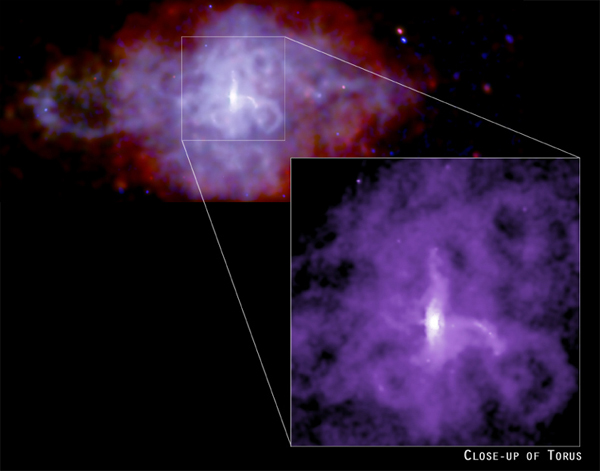
 |
 |
|
||||
|
3C58: A supernova remnant 10,000 light years from Earth Caption: A long look by Chandra at 3C58 shows that the central pulsar - a rapidly rotating neutron star formed in the supernova event - is surrounded by a bright torus of X-ray emission. An X-ray jet erupts in both directions from the center of the torus, and extends over a distance of a few light years. Further out, an intricate web of X-ray loops can be seen. These features are due to radiation from extremely high-energy particles moving in a magnetic field, and show a strong resemblance to the rings, jets and loops around the Crab pulsar. The 3C58 pulsar, the Crab pulsar, and a growing list of other pulsars offer dramatic proof that strong electromagnetic fields around rapidly rotating neutron stars are powerful generators of both high-energy particles and magnetic fields. Scale: Full-field image is 12.1 by 4.2 arcmin Chandra X-ray Observatory ACIS Image |